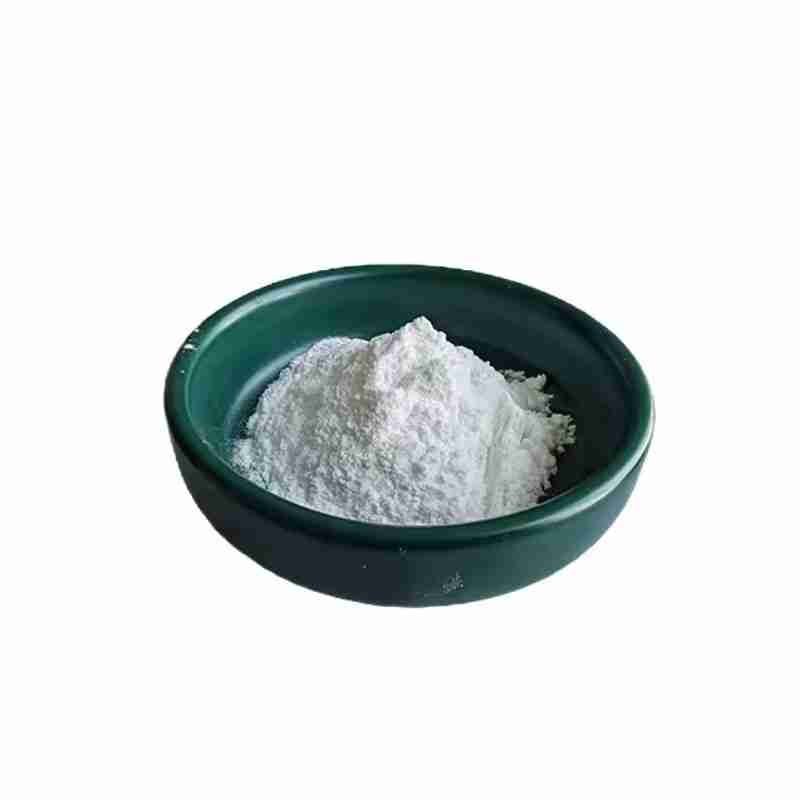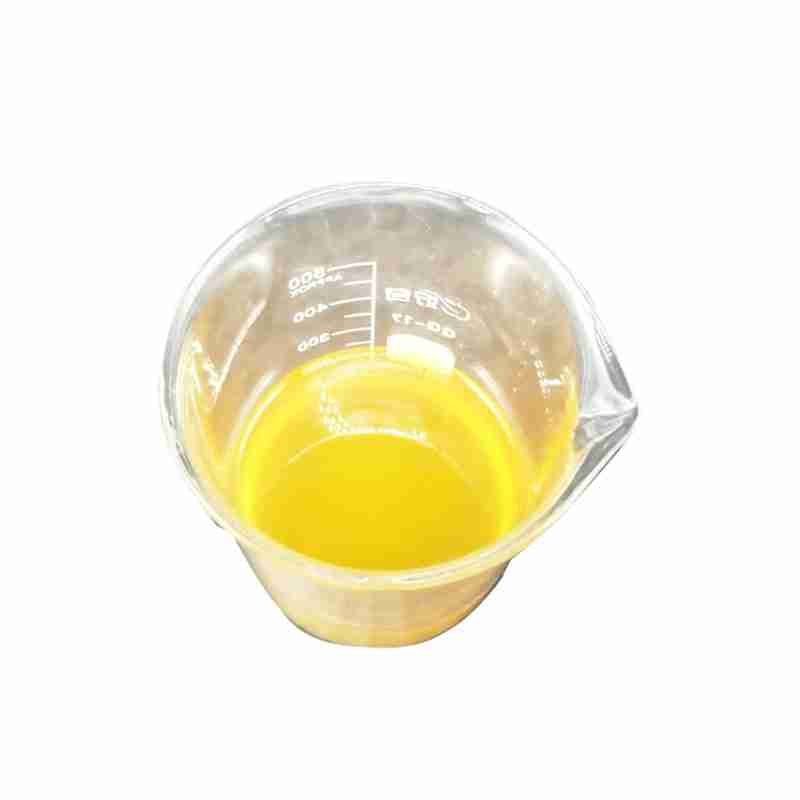1,8-Diazabicyclo[5.4.0]undec-7-ene CAS# 6674-22-2 DBU
1,8-Diazabicyclo [5.4.0] undec-7-ene is a bicyclamidine base. In natural chemistry, it is a non nucleophilic, sterically impeded tertiary amine base. It is reported that it is superior to amine drivers in Baylis Hillman response and can advertise the methylation response of phenol, indole as well as benzimidazole with dimethyl carbonate under mild conditions.
1,8-Diazabicyclo [5.4.0] undecanon-7-ene, referred to as DBU, is a type of amidine with a dual heterocyclic framework. It is an anemic or light yellow liquid at space temperature level, as well as can be dissolved in water, ethanol, acetone as well as other natural solvents. It is normally saved listed below 30 ??.
发送询盘
1,8-Diazabicyclo[5.4.0]undec-7-ene CAS# 6674-22-2 DBU
| DBU Basic information |
| Product Name: | DBU |
| Synonyms: | 1,8-DIAZABICYCLO[5.4.0]UNDEC-7-ENE;1,8-DIAZABICYCLO[5.4.0]UNDEC-7-ENE (1,5-5);1,8-DIAZEBICYCLO[5.4.0]UNDEC-7-ENE;1,8-Diazabicyclo[5.4.0]undecane-7-ene;1,8-Diazabicyclo(5 x 4 x 0)undec-7-ene;Pyrimido[1,2-a]azep;1,8-Diazabicyclo[5.4.]undec-7-ene;1,8-Diazabicyclo[5.4.0]undec-7-ene, 98% 100GR |
| CAS: | 6674-22-2 |
| MF: | C9H16N2 |
| MW: | 152.24 |
| EINECS: | 229-713-7 |
| Product Categories: | pharmacetical;Pyridines;Other Reagents;Biochemistry;Reagents for Oligosaccharide Synthesis;Biochemics;pharmaceutical raw material;Organic intermediates;OLED materials,pharm chemical,electronic;A clear, light yellow liquid of relatively low volatility. It has only a slight ammonia-like odor, is miscible with water and is soluble in most organic solvents.;bc0001 |
| Mol File: | 6674-22-2.mol |
 |
|
| DBU Chemical Properties |
| Melting point | -70 ??C |
| Boiling point | 80-83???C0.6?mm Hg(lit.) |
| density | 1.019?g/mL?at 20???C(lit.) |
| vapor pressure | 5.3 mm Hg ( 37.7 ??C) |
| refractive index | n20/D?1.523 |
| Fp | >230???F |
| storage temp. | Store below +30??C. |
| solubility | soluble |
| form | Liquid |
| pka | 13.28??0.20(Predicted) |
| color | Clear colorless to light yellow |
| Odor | Unpleasant |
| PH Range | 12.8 at 10 g/l at 20 ??C |
| PH | 12.8 (10g/l, H2O, 20??) |
| explosive limit | 1.1-6.5%(V) |
| Water Solubility | soluble |
| Sensitive | Air Sensitive |
| BRN | 508906 |
| Stability: | Stable. Incompatible with strong oxidizing agents, acids, acid chlorides, acid anhydrides. |
| InChIKey | GQHTUMJGOHRCHB-UHFFFAOYSA-N |
| CAS DataBase Reference | 6674-22-2(CAS DataBase Reference) |
| NIST Chemistry Reference | 1,8-diazabicyclo [5.4.0]undec-7-ene(6674-22-2) |
| EPA Substance Registry System | Pyrimido[1,2-a]azepine, 2,3,4,6,7,8,9,10-octahydro- (6674-22-2) |
- 2
- 2-diallylpent-4-en-1-amine
- 4
- 95-16-9
- Ammonium sulfamate
- Benzothiazole
- cas:67889-00-3ح2
- cas:83524-75-8 | pigment black 32
- cas:928836-00-4 | 2
- cas:932745-70-5 | 4
- Chemical Minerals
- Coconut diethanolamide
- Daily Chemicals
- discount
- for sale
- General pvc resin
- hexyl D-glucoside
- in stock
- Lauramidopropyl betaine
- LAURIC ACID MONOETHANOLAMIDE
- Petroleum Additives
- Plasticiser
- Ploymers
- price
- PVC
- quotation
- Raw Materal
- Remove term: Petroleum Additives Petroleum Additive
- SODIUM ETHYL 2-SULFOLAURATE
Related Products
Common English name: 5-iodo-2,3-dihydropyridazin-3-one
CAS No.: 825633-94-1
Molecular formula: C4H3IN2O
Molecular weight: 221.98
Sample: Available
Ethylhexyl Palmitate is a skin-conditioning ester, derived from ethylhexanol and palmitic acid, that imparts moisturization and a smooth texture to cosmetic and personal care formulations. It is valued for its emollient properties, enhancing the sensory experience of skin care products.
Butylated Hydroxytoluene (BHT) is a synthetic phenolic antioxidant commonly added to foods, cosmetics, and packaging to prevent the oxidation of fats and oils, thereby extending their shelf life. It is also used as a preservative in a variety of products, including rubber, petroleum products, and animal feed. BHT is recognized for its effectiveness in maintaining nutrient levels, color, flavor, and odor in food products . It is known to have a melting point of 69-71??C, a boiling point of 265??C, and is soluble in ethanol, acetone, and benzene, but not in water, glycerin, or propylene glycol . BHT is also used in some dietary supplements due to its antioxidant properties . However, it is important to handle BHT with care, as it can cause skin irritation and is considered harmful if swallowed .
Tetraacetylethylenediamine is a fully acetylated derivative of ethylenediamine, offering a high reactivity as an intermediate in organic synthesis. Its unique structure makes it a critical component in the production of specialty chemicals and pharmaceuticals, ensuring a wide range of applications in the chemical industry.
Chemical Name: STODDARD SOLVENT
CAS No.: 64742-88-7
Appearance: Colorless or Light Yellow Liquid
Terpene resin is a type of natural resin derived from terpenes, which are organic compounds found in various plants. It is known for its aromatic properties and is commonly used in the production of fragrances, flavorings, and as a component in adhesives and coatings within the chemical industry. Terpene resin offers a range of benefits, including enhancing the solubility of essential oils and providing a stable base for various applications. Its natural origin makes it a preferred choice for eco-friendly products.
Silicone oil, known for its chemical designation as dimethicone or polydimethylsiloxane, is a synthetic polymer with a backbone of alternating silicon and oxygen atoms, creating a highly versatile and stable compound. It is renowned for its exceptional lubricating properties, heat resistance, and non-toxic nature, making it a staple in various industries, including cosmetics, automotive, and aerospace.
This hydrophobic, non-volatile oil is valued for its ability to provide a smooth, non-greasy feel and to form stable emulsions with other ingredients. In personal care products, silicone oil is used to impart a silky texture, reduce friction on the skin, and create a protective barrier against environmental stressors without clogging pores.
Silicone oil’s chemical inertness and resistance to oxidation contribute to its long shelf life and stability in formulations. It is also appreciated for its compatibility with a wide range of substances, allowing for the creation of multifunctional products.
In summary, silicone oil is a reliable and multifaceted ingredient, offering a combination of performance, safety, and sensory benefits. Its use in a variety of applications reflects its versatility and enduring appeal in the marketplace.
Product name:HYDROXYPROPYL GUAR HYDROXYPROPYLTRIMONIUM CHLORIDE
Purity:99%
Appearance:Light Yellow Powder
Package:Customized according to customer needs.
Sample:Available
Octocrylene is an organic compound widely recognized for its potent UV-filtering properties, making it an essential ingredient in sunscreens and other skincare products designed to protect the skin from harmful ultraviolet radiation. With the chemical name 2-(4-Methylbenzyl)-2H-benzotriazole-5-methyl, octocrylene is a stable and photostable molecule that provides broad-spectrum protection against both UVA and UVB rays.
This oil-soluble chemical is valued for its ability to absorb UV radiation effectively, converting it into heat without causing skin irritation or staining clothes. Octocrylene is often used in combination with other UV filters to enhance the sun protection factor (SPF) of formulations, ensuring a balanced and comprehensive defense against sun damage.
As a lipophilic compound, octocrylene is compatible with various cosmetic and dermatological formulations, contributing to the development of lightweight, non-greasy sunscreens. Its chemical structure allows for a high degree of safety and efficacy, making it suitable for a wide range of skin types, including sensitive skin.
In summary, octocrylene is a reliable and efficient UV filter, pivotal in the formulation of modern sunscreens that offer advanced protection against the sun’s harmful effects while maintaining skin comfort and product aesthetics.
Chemical Name: Arabic gum
CAS No.: 9000-01-5
Appearance: powder
Chemical Name: Ammonium Iron(II) Sulfate
Synonyms: Diammonium iron bis(sulphate); iron (ii) ammonium sulfate
CAS No.: 10045-89-3
Molecular Formula: FeH5NO4S
Molecular Weight: 170.95
Chemical Name: 1,1,2,2-Tetrachloroethane
Other Name: Tetrachlorethane
CAS No.: 79-34-5
Molecular Formula: C2H2Cl4
Molecular Weight: 167.85
Appearance: Liquid



















